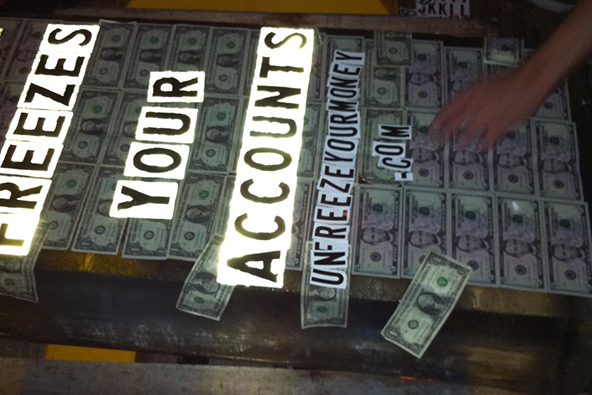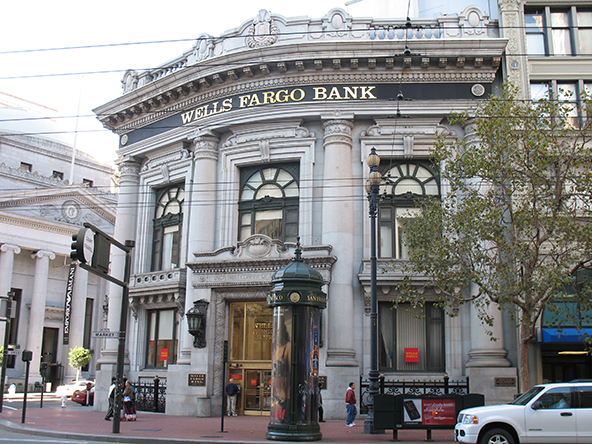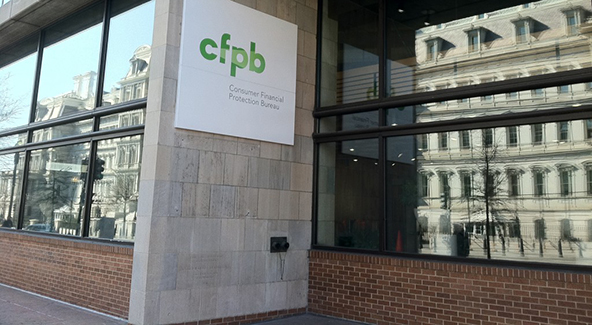Who’s Freezing Your Money?

Three years ago, WePay — a payments start-up — dropped a 600-pound block of ice in front of the Moscone Center in San Francisco at the time when PayPal’s big developer conference was taking place inside the building. Locked into the massive chunk of frozen water were hundreds of dollar notes and a huge sign, which read “PayPal freezes your accounts; UnfreezeYourMoney.com”. Visiting the specially designed landing page would explain to visitors how they could prevent PayPal from freezing their money by, of course, switching to WePay. The gory technical details of how the icy feat was pulled off, replete with accounts of the logistical challenges that had to be overcome and a cat-and-mouse game with a PayPal security guard, are eternalized for posterity on the company’s blog.
But why am I recounting ancient history, you may ask? Well, part of it is that I’m a history buff and often find myself looking toward the past for guidance. Mostly, however, the reason is that I wish I had thought of it myself. Yes, I’m jealous. See, PayPal may indeed be the best known money freezer in the payment processing world, but it is certainly not alone; in fact, it is not even the biggest one out there. Moreover, this glacial activity takes place almost exclusively in the high-risk end of the payments spectrum — precisely the area where UniBul operates. But I’ll try to repress my bitterness for a moment and focus on the reasons which lead processors to take such a drastic action. More importantly, I will examine your options for avoiding falling victim to such a plight.
Why Do Processors Freeze Their Users’ Money?
This is the most important question that needs to be answered if we are to make sense of the processors’ actions and it is precisely the misunderstanding of this issue that leads so many merchants into trouble. So, typically, a money freeze takes place early on in a merchant account’s life (say, up to six months after the account’s approval) and can be caused by two different scenarios.
The first one unfolds following a review of the merchant, conducted by its processor. Now, such a review may not necessarily be prompted by any single event, in fact it is usually just a routine procedure followed by the processor for all new merchants. Alternatively, it could be an internal evaluation by a superior of the recent work of the underwriter who approved the merchant account in question. Yet another possibility is that the review is conducted by the processor’s risk management department. But whatever the immediate cause, the point is that the reviewer may see the merchant much differently than the original underwriter did. And the discrepancy is all about risk classification.
If the merchant is selling, say, bathroom towels, no one is likely to be all that concerned with its activities and they would just move on to the next account on the list. The troubles begin when the reviewer decides that the merchant may represent a higher risk than the processor is willing to tolerate. There is also the possibility that the processor may have recently revised its underwriting policy, so that a business which might have been perfectly fine just a couple of months before would no longer be acceptable. Either way, what usually follows is that the merchant is served a termination notice.
The other scenario unfolds following a spike in the merchant’s chargeback or decline rates, which would then automatically place that merchant under review. Now, the important thing to understand, and something merchants often fail to grasp, is that for a review to be initiated, the spike in question doesn’t necessarily need to bring the chargeback rate above the infamous one-percent level, which Visa and MasterCard consider “excessive“. It can only take a modest jump to, say, 0.4 percent in a single month early on in a merchant account’s life for an alarm to be raised. Unlike the course of action taken in our previous scenario, the processor may not terminate such an account immediately. What it is more likely to do is to initiate a review. And if, following that review, the processor decides that the merchant is too-high of a risk after all, then the termination notice will be served.
Now back to the issue at hand. In both of our scenarios — the issuance of a termination notice and the initiation of a chargeback-prompted review — the merchant’s funds would be frozen either for a period of six months following the termination or until the processor convinces itself that the merchant can bring the chargeback and / or decline rate back down to an acceptable level. In reality, however, it is highly unlikely that, once a review is initiated, the merchant under examination would be given a second chance — in the processor’s eyes, if a merchant can’t get a handle of its chargebacks that early on in its payment processing life, it is unlikely that it ever will. So what’s such a processor to do? And so the termination notice is served.
How to Forestall the Ice Age
So, knowing what prompts processors to freeze merchant’s money, what are you to do? Well, two things. First, you need to honestly categorize your business. If you sell things like bathroom towels, you are low-risk. On the other hand, if you sell things like timeshares, you are high-risk. A sample, though by no means exhaustive, list of what is considered “high-risk” can be found here. If you determine that your operation falls into a lower-risk category, then you can proceed to select your processor without giving consideration to the prospects’ risk tolerance.
However, if you find yourself classified as “high-risk”, your very first task should be to eliminate all processors with low risk tolerance. That pretty much includes all of the big guys of the U.S. payment processing scene — what I like to call the First Datas and Chase Paymentechs of the world. Now, weeding out the risk-averse is often more difficult than it sounds, as many a low-risk processor will do their best to convince you that they actually are quite risk-happy. Some of them may even approve your application.
Here is an example of what may take place. Let’s say that you filed an application for your travel website with the processor you selected. The underwriter who received the paperwork takes a look at it and determines that it all checks out: yes, your business is high-risk, but not excessively so, all documents are in order, the financial statements look good, there is plenty of history, the credit reports check out, there is plenty money in the bank to support the operation and the merchant is a very intelligent and nice person, one you can clearly do business with. So yes, this is a business that is not all that high-risk, after all. So our underwriter prices your account accordingly, perhaps not even marking it up all that much, slaps the standard 10-percent reserve on your funds and tells you that he will keep a close eye on your performance in the first few months, before giving you the green light. He has done a great job bringing a good-looking merchant on board and you have secured a low-cost, high-quality merchant account. Everyone gets what they want! Except that this is not the end of the story and a couple of months later your account is reviewed, with all the terrible consequences I already described.
What you should have done instead is to have ensured that your processor was indeed a high-risk specialist. What does that mean? Well, for one thing, there is no internal misunderstanding on the question of what types of merchants are acceptable. So a review of your account would not cause it to automatically be frozen, merely because the reviewer and the original underwriter did not see eye to eye: they are on the same page. Furthermore, a high-risk processor does have a higher risk tolerance. So a modest jump in your chargeback ratio to, say, 0.5 or 0.8 percent would be alright and not lead to any unpleasant consequences. Some high-risk processors, UniBul very much among them, even have solutions for merchants suffering from excessively high chargebacks — ratios higher than one percent. If your business operates in a chargeback-prone market, this is the type of service that you need.
The Takeaway
So, in the payment processing world, money is typically frozen because the payment processor has a low risk tolerance. Yes, another possibility is that the account holder did something unlawful or otherwise against the rules, but that is the less likely possibility. That being the case, your first job as a high-risk business owner in the market for a merchant account is to rule out the ineligible candidates. If you do that successfully, you won’t have to worry about thawing your money out of an ice block later on.
Image credit: WePay.com.



How often does Unibul freeze funds and for what reasons? I don’t have the time and energy to keep marketing my product(s) and spending money to acquire customers only to be hit with a freeze on my funds sooner or later. Stripe, PayPal, Square, First Data, Payeezy, Amazon, and all the other well known companies almost always freeze funds at some point. It’s tiresome and can ruin a business if they are depending on the funds for cash flow, like new start-ups. So, how often do you guys freeze funds? I’m debating on whether or not to apply. I sell various electronics, toys, games, accessories, and gadgets.